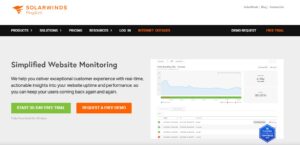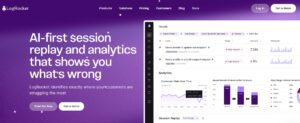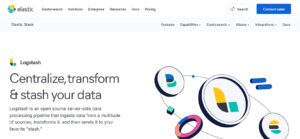Sematext is an all-in-one observability platform offering APM, logs, infra monitoring, synthetics, error tracking, and RUM in a modular setup. However, it lacks native OTEL support, advanced sampling, and comes with high storage costs. As the APM market heads toward $20.6 billion by 2030, teams are shifting to platforms with native OTEL and full-stack observability.
CubeAPM is the best alternative to Sematext as it offers full-stack observability with OpenTelemetry-first architecture, flat pricing at $0.15/GB, 800+ integrations and smart sampling. Unlike Sematext, CubeAPM supports unlimited data retention at no extra cost. Teams switching to CubeAPM report 60–80% cost savings compared to legacy APM tools like Sematext.
In this article, we’ll explore the top 7 Sematext alternatives that better meet modern observability demands — including CubeAPM, Datadog, New Relic, Coralogix, SigNoz, Sentry, and Dynatrace We’ll compare each based on cost, deployment, OTEL support, and MELT coverage.
Table of Contents
ToggleTop 7 Sematext Alternatives
- CubeAPM
- Datadog
- New Relic
- Coralogx
- SigNoz
- Sentry
- Dynatrace
Why Look for Sematext Alternatives?
Here are some of the key reasons why organizations are actively exploring alternatives to Sematext in 2025:
1. Lack of OpenTelemetry-Native Support
While Sematext offers partial integration with OpenTelemetry, it does not provide full native OTEL pipeline compatibility. This can restrict vendor neutrality and hinder seamless correlation across logs, metrics, and traces — especially for teams relying on standard OTEL collectors and exporters.
2. Steep Storage Pricing at Scale
While ingestion is affordably priced at $0.10/GB, storage can go up to $1.90/GB (Pro plan), which adds up quickly for log-heavy or trace-intensive environments. This significantly impacts total cost of ownership (TCO) in high-throughput systems.
3. Overwhelming UI and Cluttered Dashboards
While Sematext offers many observability modules in one place, users frequently report that the interface becomes cramped and confusing when trying to correlate logs, events, and metrics — especially under load.
“The interface for the monitors has a few quirks from a UX point of view – it takes 1-2 clicks more than it needs to to edit configurations. I also use middle click on my browser a million times a day to open links in a new browser tab”–G2 Review
4. Limited Advanced Sampling & Filtering
Sematext uses static or rule-based sampling strategies, lacking tail-based or context-aware sampling. This reduces visibility during outliers or anomalies — a dealbreaker for teams seeking cost-effective high-fidelity tracing.
5. SaaS-First with Limited Self-Hosting
Sematext is primarily a SaaS-based platform, with limited support for fully self-hosted deployments. While some on-prem components exist (like Sematext Agent or Logagent), end-to-end observability in air-gapped or compliance-heavy environments is harder to achieve — making it less suitable for organizations needing strict data residency or infrastructure control.
6. No Long-Term Retention Without Extra Cost
Even at higher pricing tiers, default data retention is only 7 days. Extending it requires paying expensive storage costs — with no free archival option or tiered cold storage.
Sematext Cost Example
With Sematext, retaining logs beyond the 7-day default comes at a steep cost. On the Pro plan, Sematext charges $0.10/GB for ingestion and a much higher $1.90/GB for storage. So, if a team ingests 100 GB per day and wants to retain that data for 30 days (a standard requirement in production environments), the monthly cost would be:
- Ingestion: 100 GB × 30 days × $0.10 = $300
- Storage: 3,000 GB × $1.90 = $5,700
- Total Monthly Cost: $6,000
This pricing structure makes long-term retention extremely expensive — especially for teams with growing telemetry volumes.
With CubeAPM, the cost is flat and includes unlimited retention by default. The same team ingesting 100 GB/day for 30 days (3,000 GB total) would pay just:
- All-inclusive: 3,000 GB × $0.15 = $450/month
That’s a monthly savings of $5,550 — with no extra charges for retention, storage, or data archival.
7. Support Limitations
Support is primarily email-based with variable SLAs. Larger organizations often cite the lack of dedicated support channels, SLA guarantees, and enterprise onboarding as a limitation.
Criteria for Suggesting Sematext Alternatives
1. OpenTelemetry & Modern Protocol Support
Alternatives must offer native OpenTelemetry (OTEL) support to ensure vendor neutrality, broader ecosystem compatibility, and standardized instrumentation across logs, metrics, traces, and events.
2. Pricing Transparency
Tools should have clear, predictable pricing models with no hidden per-feature fees. We prioritize platforms with either flat-rate or usage-based pricing that scale well as telemetry volume grows.
3. Smart Sampling
Alternatives should support long-term or unlimited retention without high storage costs, and provide intelligent or tail-based sampling to ensure high-value traces are captured without wasteful ingestion.
4. Deployment Flexibility
Support for self-hosting, air-gapped, or hybrid deployments is essential, especially for organizations with strict compliance, regulatory, or localization requirements.
5. Feature Coverage: Full MELT Observability
We focus on platforms offering end-to-end MELT observability: Metrics, Events, Logs, and Traces, along with APM, RUM, synthetics, and infra monitoring — in a single tool.
6. Support Quality & Developer Experience
High-quality, fast support via chat, Slack, or direct access to engineers improves developer workflows and incident resolution. Tools with responsive teams and modern UX are favored.
Sematext Overview

Known for:
Sematext is known for offering a modular, all-in-one observability platform that includes log management, APM, real user monitoring (RUM), synthetics, and infrastructure monitoring. It is designed for small to mid-sized teams that want a unified dashboard without the steep learning curve or high cost of enterprise tools. Its strength lies in simplicity and modularity — users can pick the components they need, making it a lightweight choice for DevOps observability.
Standout Features:
- Modular service structure — choose only what you need (APM, logs, infra, RUM)
- Real User Monitoring with Core Web Vitals support
- Unified alerting across logs, metrics, and traces
- Agent support for Docker, Kubernetes, AWS, and JVM environments
Key Features:
- Log Management
Search and analyze logs in real time with filtering, alerting, and flexible dashboards. - APM & Tracing
Monitor application latency, request traces, and service dependencies across microservices. - Real User Monitoring (RUM)
Frontend observability with UX metrics, performance KPIs, and error tracking. - Infrastructure Monitoring
Host, container, and Kubernetes performance tracking with visual dashboards. - Synthetic Monitoring
HTTP and browser tests for uptime and API monitoring. - Alerting & Integrations
Alert routing to Slack, Opsgenie, PagerDuty, and webhooks.
Pros:
- Affordable entry-level pricing and 14-day free trial
- Single-agent setup simplifies deployment
- Modular architecture lets teams avoid unnecessary features
- Strong integration coverage for modern DevOps stacks
Cons:
- Short default retention (7 days) across all paid plans; long-term storage is expensive ($1.90/GB)
- No native OpenTelemetry pipeline — partial OTEL support via collectors only
- Basic sampling only; lacks tail-based or intelligent trace filtering
- Limited support channels for users on lower plans (e.g., no live chat for Standard tier)
- UI can become unresponsive when logs, events, and metrics are loaded together
Best For:
- Teams that need basic APM and logging with low setup overhead
- Startups and mid-sized engineering orgs that can work within short retention windows
- DevOps teams looking for a budget observability platform without deep customization needs
Pricing & Customer Reviews:
Plans & Pricing:
- Basic – $5/month
- 500 MB/day, $0.10/GB ingestion, $0.15/GB storage
- Standard – $50/month
- 1 GB/day, $1.57/GB storage
- Pro – $60/month
- Higher volume, $1.90/GB storage
- All tiers include 7-day retention by default
- 14-day free trial available on all plans
Customer Reviews:
Sematext is rated 4.5/5 on G2, with users appreciating its modular stack and ease of onboarding. However, common concerns include UI responsiveness, steep storage costs, and lack of support on lower plans.
Top 7 Sematext Alternatives
1. CubeAPM

Known for:
Cost-efficient, OpenTelemetry-native observability with full MELT coverage — CubeAPM is built for modern engineering teams that want powerful distributed tracing, full-stack visibility, and compliance-friendly deployment, all at a flat, low cost. It supports logs, metrics, traces, real user monitoring (RUM), synthetics, and error tracking with smart sampling and unlimited retention by default.
Key Features:
- OpenTelemetry-First Tracing
Native OTEL support enables easy instrumentation and cross-platform compatibility across services, containers, and languages.
- Smart Sampling
Uses context-aware sampling (based on latency, errors, etc.) to retain critical traces while minimizing data volume — enabling 90%+ cost reduction compared to head-based sampling used by most vendors.
- Self-Hosted or Cloud Deployment
Fully supports on-premises and private cloud deployments, ensuring teams can meet data localization and compliance requirements (HIPAA, GDPR, etc.).
- Unlimited Retention
Ingest once, store forever — no extra fees or storage premiums for long-term telemetry.
- Full MELT Observability
Covers Metrics, Events, Logs, Traces (MELT), including browser RUM, synthetics, and serverless observability.
- Native Compatibility
Works with Prometheus, Datadog agents, New Relic instrumentation, and all major OTEL SDKs.
Standout Features:
- Flat $0.15/GB pricing for data ingestion.
- Deployment inside your cloud — avoids egress costs and ensures data sovereignty
- WhatsApp/Slack-based support with engineers — real-time troubleshooting
- Rapid onboarding — switch in under 1 hour
Pros:
- Native OTEL support across all components
- True self-hosting with cloud/on-prem hybrid support
- Unlimited retention at no extra cost
- Smart sampling drastically reduces cost and noise
- Fast, responsive support via Slack or WhatsApp
Cons:
- Not suited for teams looking for off-prem solutions
- Strictly an observability platform and does not support cloud security management
Best for:
- Teams seeking modern observability without vendor lock-in
- Organizations needing on-prem/self-hosted APM with compliance needs
- Startups and enterprises looking to cut observability costs by 60–80%
Pricing & Customer Reviews:
- Flat pricing: $0.15/GB — includes ingestion, retention, and storage
- Rating: 4.7/5(Based on Slack and end-user feedback)
CubeAPM vs Sematext:
CubeAPM offers native OTEL support, unlimited retention, and flat pricing, whereas Sematext lacks native OpenTelemetry, limits retention to 7 days by default, and charges steep storage fees ($1.90/GB on Pro). CubeAPM also delivers on-prem/self-hosting and real-time Slack-based support — which Sematext only offers on higher-tier plans. For teams scaling their observability footprint, CubeAPM is both more affordable and more powerful.
2. Datadog

Known for:
Datadog is widely known as a cloud-native monitoring and security platform used by enterprises to monitor applications, infrastructure, logs, and user experience. It is popular for its deep integrations, pre-built dashboards, and coverage across the full DevOps stack — including APM, logs, RUM, synthetics, CI/CD, and cloud security.
Key Features:
- Application Performance Monitoring (APM)
Visualize service-to-service latency, track bottlenecks, and debug with flame graphs, service maps, and request tracing.
- Log Management
Centralized log ingestion with filtering, indexing, live tailing, and dynamic rehydration of cold logs (at extra cost).
- Infrastructure Monitoring
Collect metrics from cloud services, containers, and hosts with over 600 integrations (AWS, Azure, Kubernetes, Docker, etc.).
- RUM & Synthetic Monitoring
Real User Monitoring for web and mobile apps, plus API checks, browser-based tests, and uptime probes.
- Security Monitoring & Cloud SIEM
Unified observability and threat detection in one platform.
- Dashboards & Collaboration
Customizable dashboards, notebooks, and integrated incident response workflows.
Standout Features:
- Large ecosystem with 900+ integrations
- Unified observability + security in a single UI
- High-granularity dashboards and alerting
- Dynamic log indexing and rehydration
Pros:
- Extensive feature set across observability and security
- High-scale infrastructure and APM visibility
- Enterprise-grade integrations and dashboards
- 15-month retention available (at higher pricing tiers)
Cons:
- Complex and unpredictable pricing with surprise overages
- High storage costs and hidden charges for log indexing, RUM sessions, and synthetic runs
- Limited OpenTelemetry support — OTEL ingestion is partial and lacks deep correlation
- Retention beyond 15 months requires rehydration or cold archive, which adds to costs
- Support SLAs vary by plan; faster response is locked behind premium tiers
Best for:
- Enterprises needing an all-in-one observability and security platform
- Teams with large cloud-native deployments and the budget to scale observability
Pricing & Customer Reviews:
- APM starts at $31/host/month,
- Infrastructure at $15/host/month
- Log ingestion: $0.1/GB, but retention and indexing incur extra costs
- G2 Rating: 4.4/5
Datadog vs Sematext:
While Datadog offers far deeper enterprise-grade capabilities than Sematext, it comes at a significantly higher and more complex cost. Datadog supports extended retention (up to 15 months), but charges separately for log indexing, RUM sessions, and synthetic usage. In contrast, Sematext has simpler pricing but lacks Datadog’s depth, ecosystem, and security features. For large orgs with complex stacks, Datadog is more powerful — but less predictable and much more expensive than Sematext.
3. New Relic
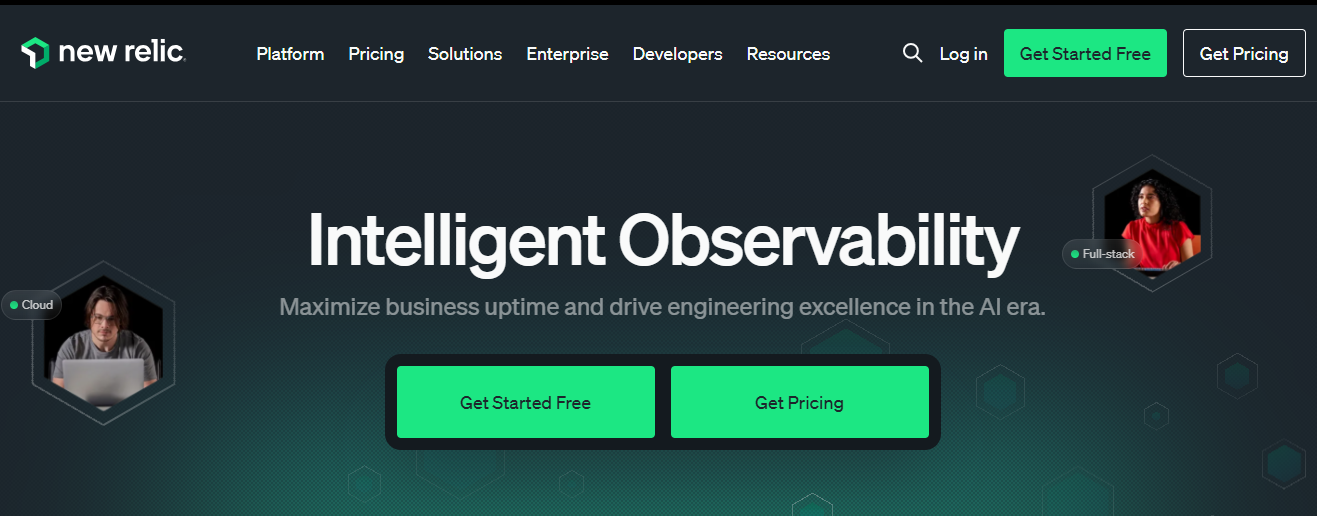
Known for:
New Relic is best known for being one of the earliest players in APM and telemetry. It offers a full-stack observability platform that spans application performance, logs, infrastructure, browser and mobile monitoring, and synthetics — all integrated into a single user interface. New Relic is commonly used by mid to large enterprises looking for out-of-the-box dashboards and prebuilt instrumentation.
Key Features:
- Application Monitoring
Distributed tracing, throughput analysis, and transaction breakdowns to identify slow services and bottlenecks.
- Log Management
Centralized log ingestion and live search, with custom parsing, filtering, and retention settings.
- Infrastructure & Kubernetes Monitoring
Host and container-level metrics with built-in visualization for cloud-native environments.
- Browser & Mobile Monitoring
End-user performance tracking for frontend and native apps, including JS errors and page load analysis.
- Dashboards & Alerts
Custom visualizations and alert conditions across metrics, logs, traces, and events.
Standout Features:
- Unified platform for APM, logs, infra, and frontend
- Automatic instrumentation with supported agents
- Telemetry Data Platform for unified querying
- Visualization tools and curated dashboards
Pros:
- Broad out-of-the-box instrumentation and SDKs
- Intuitive UI with guided onboarding for developers
- Strong RUM and mobile observability support
- Integrated logs and APM in one view
Cons:
- No support for OpenTelemetry-native ingestion pipelines
- Data retention is limited unless you pay more
- High per-user license cost ($400/user/month as per internal comparison)
- Support access and SLAs vary by pricing tier
Best for:
- Enterprises already invested in the New Relic ecosystem
- Teams needing strong APM and browser/mobile monitoring in one tool
- Engineering orgs looking for preconfigured dashboards and fast time-to-value
Pricing & Customer Reviews:
- Pricing: Ingestion-based pricing of $0.35/GB + $400/user/month
- G2 Rating: 4.4/5
New Relic vs Sematext:
New Relic offers broader feature depth and better frontend/mobile monitoring than Sematext. However, its pricing model is steeper — with charges for ingestion and per-user licensing. Sematext, while more affordable, lacks OpenTelemetry-native support and advanced frontend instrumentation. New Relic is a better choice for organizations willing to invest in enterprise observability, while Sematext suits smaller teams with simpler needs.
4. Coralogix

Known for:
Coralogix is known for its log analytics and cost-optimization model, offering structured observability across logs, metrics, traces, and security. It is positioned as a log-first observability vendor that appeals to teams looking to optimize costs by routing data to different storage tiers based on usage and query frequency.
Key Features:
- Log Pipeline Optimization
Coralogix routes logs into three streams — real-time, archive, and compliance — based on how data is used, helping reduce storage costs.
- Metrics & Traces
Integrates metrics and traces into the same platform, with support for distributed tracing and anomaly detection.
- TCO Reduction Features
Allows teams to store archived data in their own S3-compatible storage, reducing vendor-side storage costs.
- Security & Compliance
Offers threat detection, SIEM capabilities, and compliance-ready architecture for privacy-focused industries.
Standout Features:
- Customizable log routing by use-case (streaming, hot storage, archive)
- Archived logs can be stored in the customer’s own cloud (e.g., AWS S3)
- Rich dashboarding and ML-powered alerting
- Native integration with security and compliance workflows
Pros:
- Flexible cost-control via log stream classification
- Full observability with built-in metrics and traces
- Option to offload long-term storage to customer infrastructure
- Integrated security analytics for DevSecOps teams
Cons:
- Archived logs sent to customer cloud still incur egress fees before transfer
- Since logs pass through Coralogix before archival, data localization compliance may break
- Log-first design — not all observability features are equally deep
- Complex routing setup may require tuning over time
Best for:
- Teams looking to optimize observability spend across storage tiers
- Companies that need to comply with GDPR or security policies but still want vendor tooling
- DevSecOps and platform teams looking to unify logging and threat detection
Pricing & Customer Reviews:
- Pricing: Three-tier plans from ~$245.55/month, billed annually
- G2 Rating: 4.6/5
Coralogix vs Sematext:
Both platforms offer log management and observability, but Coralogix focuses more on cost control and stream-based routing, while Sematext offers a simpler SaaS experience. Coralogix allows users to offload logs into their own cloud archive — lowering vendor storage costs — but customers still pay egress fees, and the data has already left their infrastructure. Sematext, while more limited, avoids that complexity. Coralogix is the better choice for teams willing to trade setup effort for long-term cost efficiency and compliance control.
5. SigNoz

Known for:
SigNoz is an open-source, OpenTelemetry-native observability platform built to give engineering teams full control over their telemetry stack. It is designed to replace proprietary APM solutions with a fully self-hosted alternative that supports logs, metrics, traces, dashboards, and alerts — without vendor lock-in.
Key Features:
- OpenTelemetry Native Instrumentation
SigNoz uses OTEL across all telemetry types — making it easy to ingest data from any service or language that supports the OTEL standard.
- Self-Hosted with Docker or Helm
Teams can deploy SigNoz on their own infrastructure via Docker Compose or Helm charts — ensuring full control over data and performance.
- Logs, Metrics, Traces in One UI
SigNoz supports deep correlation across logs, traces, and metrics with shared context and dashboards.
- Dashboards & Alerts
Built-in dashboards and alerts, with support for PromQL and custom rule configurations.
Standout Features:
- Full OpenTelemetry-native architecture
- Self-hostable with no paid licensing requirements
- Tail-based sampling and configurable trace policies
- Prometheus-compatible metrics engine and Grafana-style dashboards
Pros:
- Open source and free to self-host
- Native support for OTEL, Prometheus, and Docker/Kubernetes
- Fine-grained control over sampling, retention, and storage
- Active developer community and GitHub support
Cons:
- Requires engineering effort to self-host and maintain
- Advanced dashboards and query tuning have a learning curve
- No built-in support for RUM or synthetics
- Support response times vary depending on the tier/community
Best for:
- Engineering teams that want full data ownership and OTEL-native workflows
- Startups and DevOps teams avoiding SaaS lock-in
- Organizations with in-house infra who prefer to self-manage observability
Pricing & Customer Reviews:
- Pricing: Free tier + base fee of $49/month. Charges beyond that depend on ingestion volume.
- G2 Rating: 4.6/5
SigNoz vs Sematext:
While Sematext is SaaS-first with limited OTEL support, SigNoz is built fully on OpenTelemetry and can be self-hosted at no licensing cost. SigNoz provides tail-based sampling and Prometheus-style dashboards, whereas Sematext uses basic head-based sampling. SigNoz requires more setup, but offers better data control, flexibility, and long-term cost efficiency for teams ready to self-manage.
6. Sentry
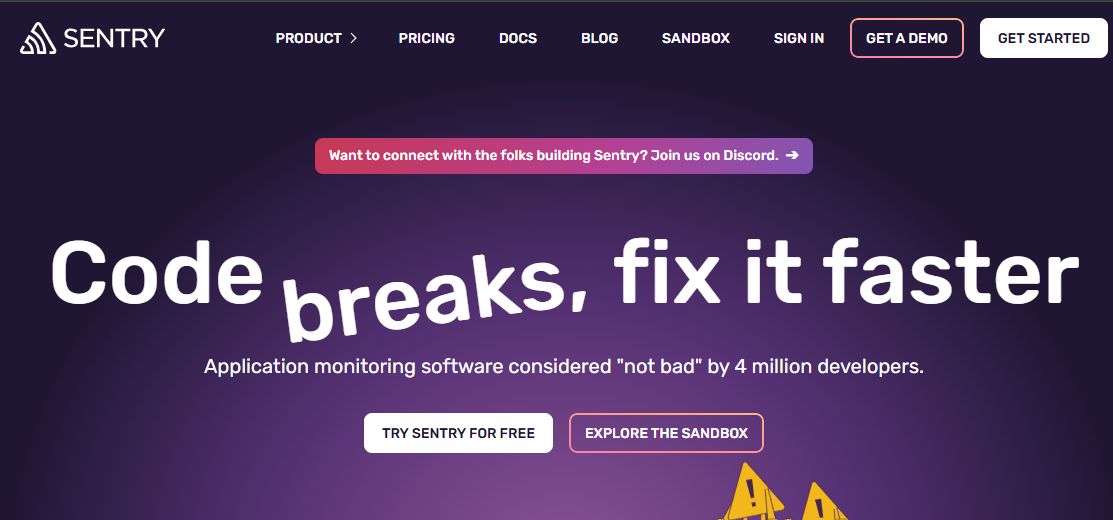
Known for:
Sentry is known as a developer-first application monitoring and error tracking platform. It started as a tool for frontend and backend error visibility but has since expanded to offer distributed tracing, performance monitoring, and release health — with native SDKs across popular frameworks and languages.
Key Features:
- Error Tracking
Automatically captures exceptions, stack traces, and contextual metadata (e.g., release version, browser, user actions).
- Performance Monitoring
Offers transaction traces, latency metrics, and span-based views to identify slow endpoints or N+1 queries.
- Release Health
Tracks crash rates, user impact, and failed sessions across app versions for CI/CD feedback loops.
- Session Replay (Paid Add-On)
Visual replay of user sessions for debugging frontend issues with full context.
Standout Features:
- Best-in-class error reporting and debugging tools
- Tight integration with GitHub, Jira, Slack, and CI/CD pipelines
- Native SDKs for JavaScript, Python, Node.js, Java, PHP, .NET, and mobile platforms
- Developer-focused workflow integration
Pros:
- Highly detailed stack traces with user context
- Real-time alerts for errors and performance regressions
- Excellent integration with dev tools and issue trackers
- Lightweight setup with modern SDKs
Cons:
- Not a full observability stack — limited log and infrastructure monitoring
- No built-in support for metrics or full MELT coverage
- OTEL support is still evolving
- Session replay and advanced features are add-ons and billed separately
Best for:
- Developer teams focused on error tracking, debugging, and release quality
- Product engineering orgs needing visibility into frontend, mobile, or backend errors
- Teams that want error observability tightly tied to deployments and issues
Pricing & Customer Reviews:
- Pricing: Usage-based pricing depending on error events, sessions, and features
- G2 Rating: 4.6/5
Sentry vs Sematext:
Sentry and Sematext serve different priorities: Sentry is purpose-built for error tracking and developer debugging, while Sematext offers a more traditional APM/logs/infra model. Sematext has better coverage of logs and infrastructure, but lacks the fine-grained error context and CI/CD integration that Sentry excels at. For frontend-heavy teams or product engineering orgs, Sentry delivers better insights — but it’s not a full observability replacement like Sematext.
7. Dynatrace
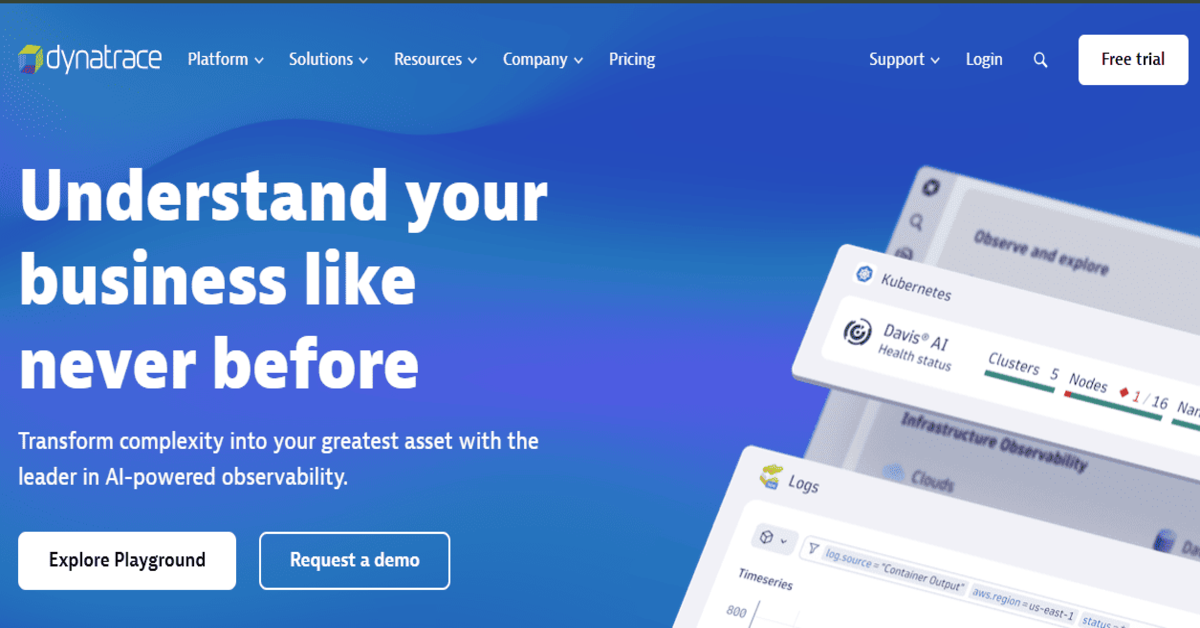
Known for:
Dynatrace is known for its AI-powered enterprise observability platform, combining infrastructure monitoring, APM, logs, security, and automation into a single solution. Its unique Davis AI engine and Smartscape topology make it ideal for large, complex environments that need automated root-cause analysis and dynamic dependency mapping.
Key Features:
- Full-Stack Observability
Covers metrics, logs, traces, real user monitoring (RUM), synthetics, and infrastructure — all correlated with topology and dependencies.
- Davis AI Engine
AI-powered detection of anomalies, root-cause analysis, and event correlation across distributed systems.
- Smartscape Topology Mapping
Auto-discovers services, processes, containers, and dependencies in real time.
- Application Security & Runtime Insights
Built-in application vulnerability detection and continuous code-level visibility.
Standout Features:
- Real-time service maps with automated root-cause analysis
- Unified observability + security
- Davis AI engine for anomaly detection
- Deep native support for cloud-native and hybrid infrastructure
Pros:
- Enterprise-grade observability and automation
- Excellent for dynamic environments (Kubernetes, microservices)
- Automated dependency mapping and topology-aware alerts
- Combines performance monitoring with runtime security
Cons:
- Steeper learning curve for new teams
- High pricing makes it less accessible to startups
- OTEL support exists but is not fully native
- Deployment flexibility limited for full air-gapped setups
Best for:
- Enterprises with large, dynamic cloud environments
- Teams seeking AI-powered automation and smart diagnostics
- Organizations needing unified observability + security tooling
Pricing & Customer Reviews:
- Pricing: $0.08/hour per 8 GiB host (~$57.60/host/month)
- G2 Rating: 4.5/5
Dynatrace vs Sematext:
Dynatrace offers far more automation and AI-driven insights than Sematext, making it ideal for enterprise-scale workloads. However, its pricing and complexity are significantly higher. Sematext provides a simpler, more modular entry point for smaller teams, while Dynatrace caters to high-scale, compliance-heavy, or security-integrated observability needs. For teams that want automated diagnostics and topology views out of the box, Dynatrace leads — but it’s overkill for leaner teams using Sematext.
Conclusion
Sematext remains a practical observability solution for small to mid-sized teams — but its limitations around short default retention, lack of native OpenTelemetry, and expensive long-term storage have pushed many organizations to explore better-suited alternatives.
If you need OpenTelemetry-native instrumentation, flat pricing, and unlimited retention, platforms like CubeAPM and SigNoz offer compelling value. For enterprise-scale operations, Dynatrace and Datadog deliver deeper automation and ecosystem integration — albeit at a much higher cost. Coralogix appeals to cost-conscious teams with tiered log pipelines, while New Relic offers broad APM and browser coverage. Sentry, meanwhile, is ideal for developer-side debugging and release health monitoring.
Choosing the right alternative depends on your needs for compliance, control, cost predictability, and depth of observability. For teams looking to modernize their observability stack without overspending, CubeAPM offers the most balanced combination of capability, affordability, and control.

